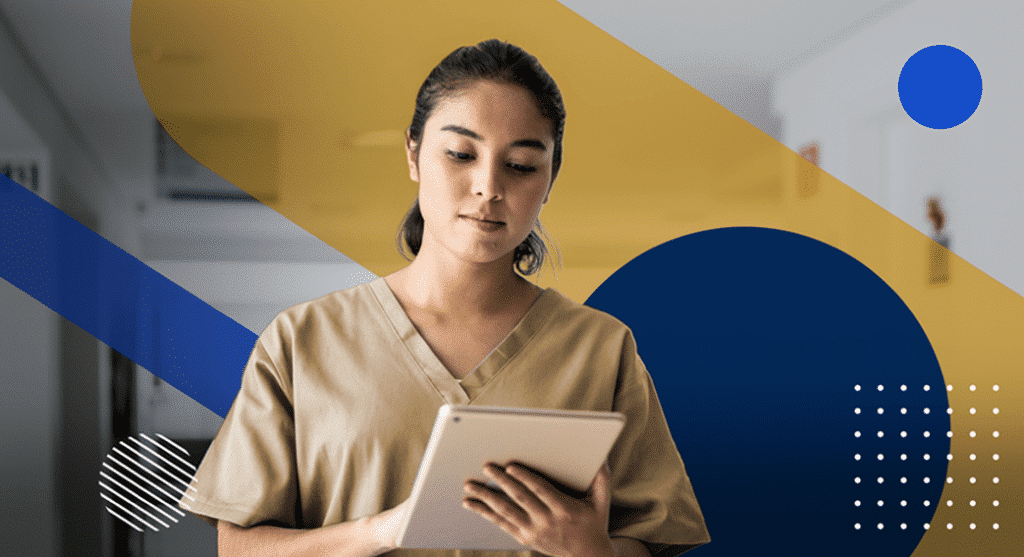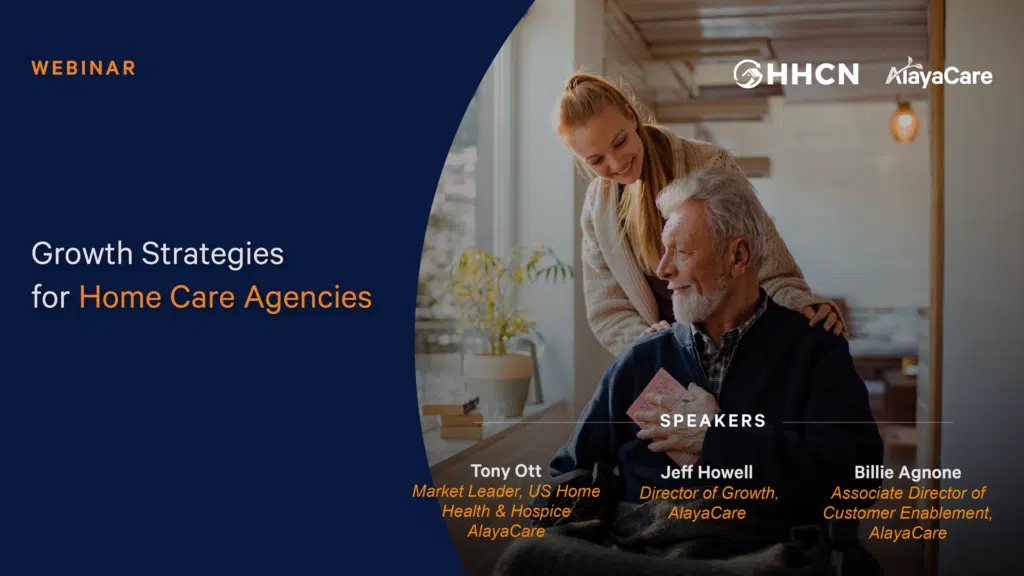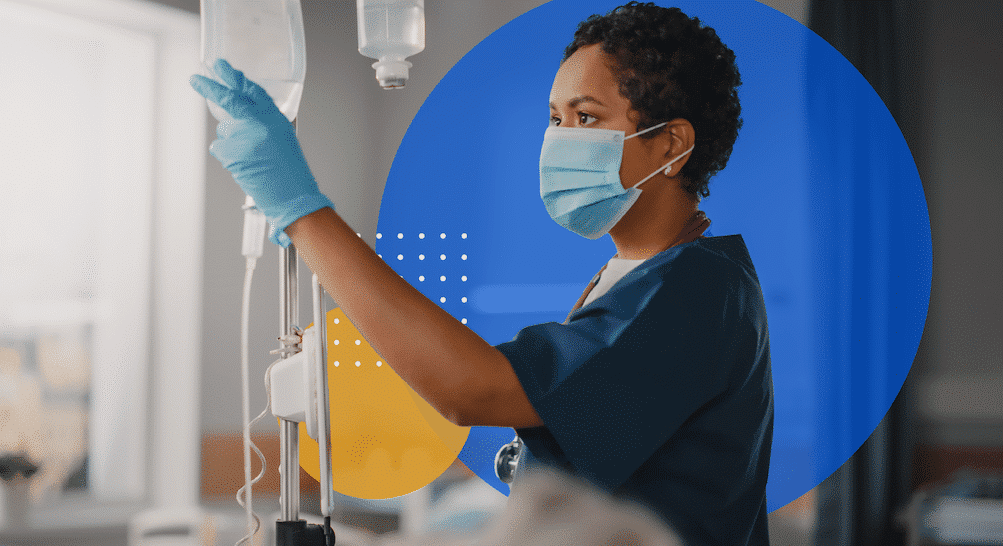Blog
[Webinar Recap] How AI and optimization tools are impacting home care delivery

For our most recent webinar, we brought together data experts to share their insights on how AI, machine learning and optimization algorithms are reshaping home care delivery. In this blog, we highlight 3 key takeaways from our webinar Transforming Home Care with AI: How Machine Learning and Optimization Algorithms Are Impacting Care Delivery (watch the webinar on-demand here).
The panelists were:
Naomi Goldapple, SVP, Data and Intelligence, AlayaCare
Naomi’s current challenge as Head of AlayaLabs is to support AlayaCare’s innovation strategy through applied research in machine learning and optimization applications. Naomi has spent the last few years leveraging and exploiting new technologies to build and commercialize products that solve real business problems and improve patient outcomes.
Dr. Nadia Lahrichi, Professor, Polytechnique Montréal
Nadia Lahrichi is a full professor at Polytechnique Montreal and the deputy director of CIRRELT, with expertise in applying modeling & operational research tools to healthcare systems. She has received awards for outstanding application of operational research and published over 50 papers in peer-reviewed journals. Her research focuses on improving patient flow and resource scheduling using exact, metaheuristics & discrete event simulation approaches.
Sarah Khalid, Product Manager, Artificial Intelligence/Machine Learning & Optimization, AlayaCare
Sarah Khalid is a Product Manager at AlayaCare’s R&D arm AlayaLabs, which focuses on bringing state-of-the-art machine learning and optimization innovations to the home care industry. She is also passionate about writing, community building, and dialogue on human values and meaning.
4 main themes of how advanced algorithms (AI and optimization tools) impact home care delivery:
1. Improve data usage
AI can greatly improve home care data collection by providing more efficient and accurate methods of gathering, processing, and analyzing volumes of information. For example, AI-driven algorithms can be used to automatically detect anomalies in large datasets such as medical records or client histories, allowing home care providers to quickly identify potential issues that need further investigation.
Naomi highlights the variety of data that AI and data science can utilize in order to create more accurate, sophisticated models. “We gather data…through our platform and it’s going to come in many, many shapes and sizes,” said Naomi Goldapple. “[such as] structured, semi-structured, or unstructured [learning models].” For home care, it is important for AI to consider both structured and unstructured data models when analyzing patterns and providing predictions since unstructured data (e.g. notes) can often provide invaluable insight into complex patterns or relationships that may be difficult to identify otherwise.
AI-driven tools can also improve the collection of data by helping users make sure their data is always up to date with the monitoring of models so AI-driven workflows, scheduling and processes can work properly and efficiently. “One of the things that we do to help our customers is provide things like missing data dashboards to make sure that they keep their data up to date,” said Naomi. “So, if you can imagine that you have a visit optimizer that’s helping you to make the best routes and the best schedules for your caregivers, but it’s missing key information like home addresses for certain caregivers or proper addresses for the clients or incorrect availability for the caregivers. Then it’s not going to give you good solutions, right? So, we need to make sure that data is up to date, and we give the proper tools.”
2. Better utilization of client matching
“The discussion also touched upon how utilizing optimization algorithms helps with better utilization of client matching by exploring options beyond the scheduler’s top 10 choices. This is achieved by taking into consideration factors such as availability and proximity when making decisions.”
Naomi Goldapple
Naomi talks about how optimization algorithms for patient matching can help save a lot of time in finding accurate matches for patients. “We have people using [Visit Optimizer]” shared Naomi, “some beta customers and early access customers, and it’s very exciting to see their reactions on how much time this is saving and how accurate it is and even sometimes how it presents matches that weren’t top of mind but in fact, make a lot of sense.” This highlights how advanced algorithms can identify matches that might have been overlooked by humans but would be very effective in supporting a client’s care plans.
Naomi emphasizes the importance of using optimization tools so “you’re not relying on a scheduler’s top 10 go-to’s, but in fact really looking at the availabilities and the matching and the proximity to be able to make the best decisions.” Nadia then mentions how optimization algorithms support efficient routes and scheduling, having this links to a more efficient use of resources, increase satisfaction among staff and reduction of churn. This ultimately results in happier caregivers and better care in the home, and better care in the home results in better patient/client outcomes.
3. A decision support tool
As AI and optimization tools begin to grow within various workplaces, some have questioned whether these new tools will replace human decision-making, and according to Naomi and Nadia, that is not the case at all. AI and optimization tools are simply decision support tools.
Nadia started the conversation clarifying into what a decision support tool meant, “the idea is if they are well designed, the decision support systems, they’re only there to help the user make better decisions and designing. Well, what does it mean? It starts by bringing together everyone. So the idea is you always have different stakeholders, and they all need to be included in the design of the solution. The solution being the decision support system and the role of the designer is just to be able to bring together all the views to find the right solution.”
Naomi then added that these are tools to augment human decision making and eliminate repetitive tasks. “From a caregiver point of view, if you think this is the type of technology that can literally summarize everything that has been happening in the patient journey, that has been happening in their chart, let you know what has changed since the last visit, and keep track of all this detail… then this can be a very transformative decision support for the whole care industry.”
4. Gather client care data for designing a care plan
Finally, the discussion addressed how advanced algorithms can be used to gather client care data for designing a care plan.
Naomi explained how it is important for AI and optimization tools to leverage different sources of client care data when designing a care plan such as unstructured data models, “that means all the myriad of notes [by caregivers] that are left all over the system, because a lot of these notes have very important information that should be passed out and bubbled up.” Collecting client information such as assessment forms, medical history, any recent falls, and any change in status reports is critical to understanding an individual’s health condition and needs, which then helps inform tailored care plans accordingly.
For example, in nurses’ notes “they have found that if terms like pain and fatigue have been identified, then that usually leads to hospitalization,” said Naomi. “Looking for those types of things in the notes has really shown which types of features have the most predictive power” which is important when designing the best care plans for clients to prevent rehospitalization and improve client risk management.
Home care agencies can learn a lot about AI and optimization tools, like client and caregiver matching, optimize scheduling processes and gain insights on how to gather client care data to design effective care plans. By leveraging this technology, home care agencies can ensure that their clients receive the best possible care plan tailored specifically for them.
Watch the full recording of the webinar now!



